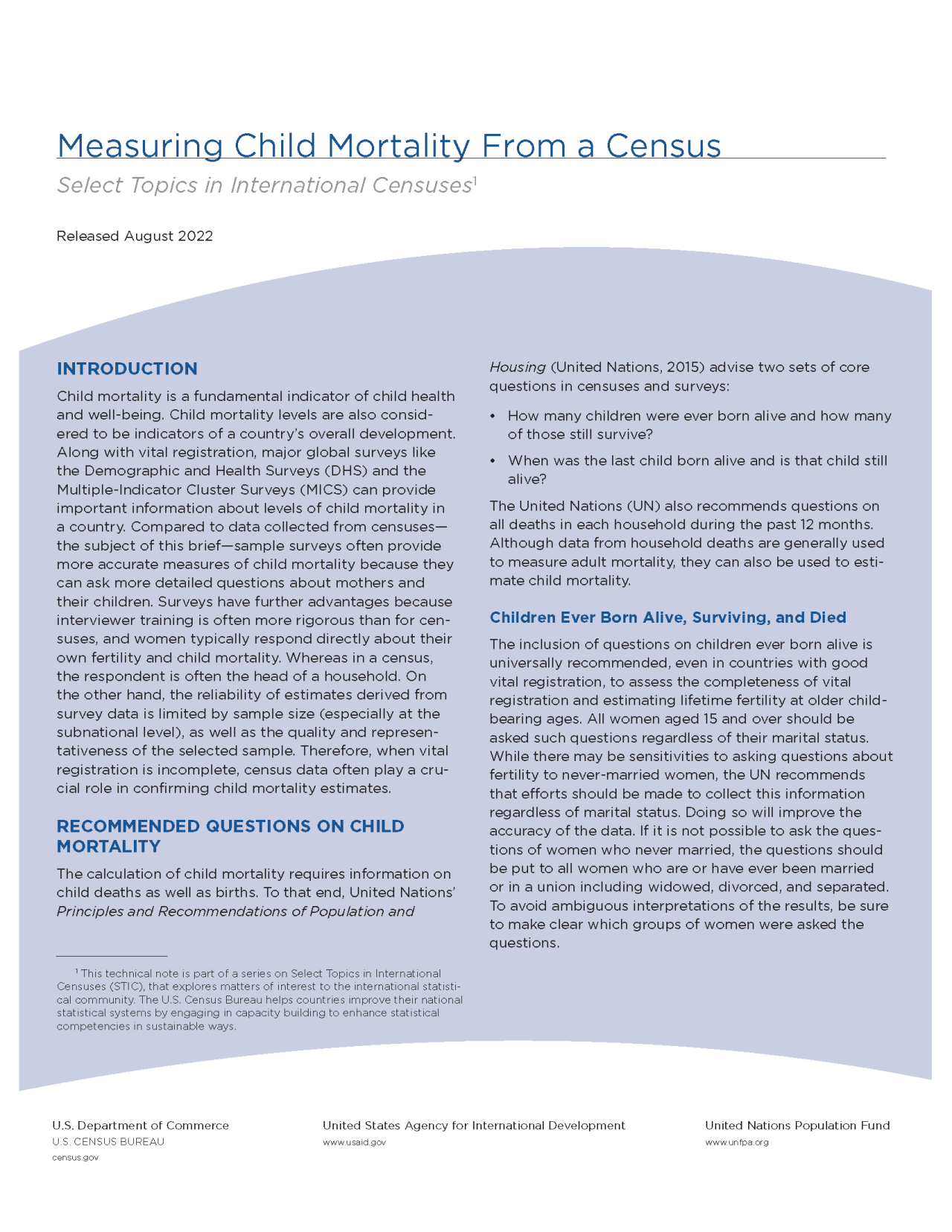
An official website of the United States government
Here’s how you know
Official websites use .gov
A .gov website belongs to an official government organization in the United States.
Secure .gov websites use HTTPS
A lock (
) or https:// means you’ve safely connected to the .gov website. Share sensitive information only on official, secure websites.
-
//
- Census.gov /
- Select Topics in International Censuses /
- Questionnaire Content & Development /
- Measuring Child Mortality from a Census
Measuring Child Mortality from a Census
Measuring Child Mortality from a Census
Introduction
Child mortality is a fundamental indicator of child health and well-being. Child mortality levels are also considered to be indicators of a country’s overall development. Along with vital registration, major global surveys like the Demographic and Health Surveys (DHS) and the Multiple-Indicator Cluster Surveys (MICS) can provide important information about levels of child mortality in a country. Compared to data collected from censuses— the subject of this brief—sample surveys often provide more accurate measures of child mortality because they can ask more detailed questions about mothers and their children. Surveys have further advantages because interviewer training is often more rigorous than for censuses, and women typically respond directly about their own fertility and child mortality. Whereas in a census, the respondent is often the head of a household. On the other hand, the reliability of estimates derived from survey data is limited by sample size (especially at the subnational level), as well as the quality and representativeness of the selected sample. Therefore, when vital registration is incomplete, census data often play a crucial role in confirming child mortality estimates.
- This technical note is available in English, Russian, Spanish, and Arabic.
Share
 Yes
Yes
 No
NoComments or suggestions?


Top


